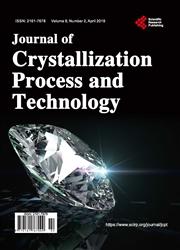ACCEPT-NMR: A New Tool for the Analysis of Crystal Contacts and Their Links to NMR Chemical Shift Perturbations
引用次数: 1
Abstract
We have developed an open-source cross-platform software toolkit entitled ACCEPT-NMR (Automated Crystal Contact Extrapolation/Prediction Toolkit for NMR) as a helpful tool to automate many of the complex tasks required to find and visualize crystal contacts in structures of biomolecules and biomolecular assemblies. This toolkit provides many powerful features geared toward NMR spectroscopy and related disciplines, such as isotopic labeling, advanced visualization options, and reporting tools. Using this software, we have undertaken a survey of available chemical shift data in the literature and deposited in the BMRB, and show that the mere presence of one or more crystal contacts to a residue confers an approximately 65% likelihood of significant chemical shift perturbations (relative to solution NMR chemical shifts). The presence of each additional crystal contact subsequently increases this probability, resulting in predictive accuracies in excess of 80% in many cases. Conversely, the presence of a significant experimental chemical shift perturbation indicates a >60% likelihood of finding one or more crystal contacts to a particular residue. Pinpointing sites likely to experience large CSPs is critical to mapping solution NMR chemical shifts onto solid-state NMR data as a basis for preliminary assignments, and can thus simplify the assignment process for complex biomolecules. Mapping observed CSPs onto the molecular structure, on the other hand, can indicate the presence of crystal interfaces where no crystal structure is available. Finally, by detecting sites critical to intermolecular interfaces, ACCEPT-NMR can help guide experimental approaches (e.g. isotopic labeling schemes) to detect and probe specific inter-subunit interactions.ACCEPT-NMR:一种分析晶体接触及其与核磁共振化学位移摄动的联系的新工具
我们开发了一个开源的跨平台软件工具包,名为ACCEPT-NMR(自动晶体接触外推/预测工具包,用于核磁共振),作为一个有用的工具,可以自动执行许多复杂的任务,以发现和可视化生物分子和生物分子组装结构中的晶体接触。该工具包提供了许多强大的功能,面向核磁共振光谱和相关学科,如同位素标记,高级可视化选项和报告工具。使用该软件,我们对文献中可用的化学位移数据进行了调查,并将其保存在BMRB中,结果表明,仅仅存在一个或多个晶体接触到残留物,就会产生大约65%的显著化学位移扰动的可能性(相对于溶液核磁共振化学位移)。每个额外的晶体接触的存在随后增加了这种可能性,导致在许多情况下预测精度超过80%。相反,如果存在显著的实验化学位移扰动,则表明有60%的可能性找到一个或多个与特定残留物的晶体接触。精确定位可能经历大型csp的位点对于将溶液核磁共振化学转移映射到固态核磁共振数据上作为初步分配的基础至关重要,因此可以简化复杂生物分子的分配过程。另一方面,将观察到的csp映射到分子结构上,可以表明在没有晶体结构的地方存在晶体界面。最后,通过检测分子间界面的关键位点,ACCEPT-NMR可以帮助指导实验方法(例如同位素标记方案)检测和探测特定的亚基间相互作用。
本文章由计算机程序翻译,如有差异,请以英文原文为准。
求助全文
约1分钟内获得全文
求助全文

 求助内容:
求助内容: 应助结果提醒方式:
应助结果提醒方式:


